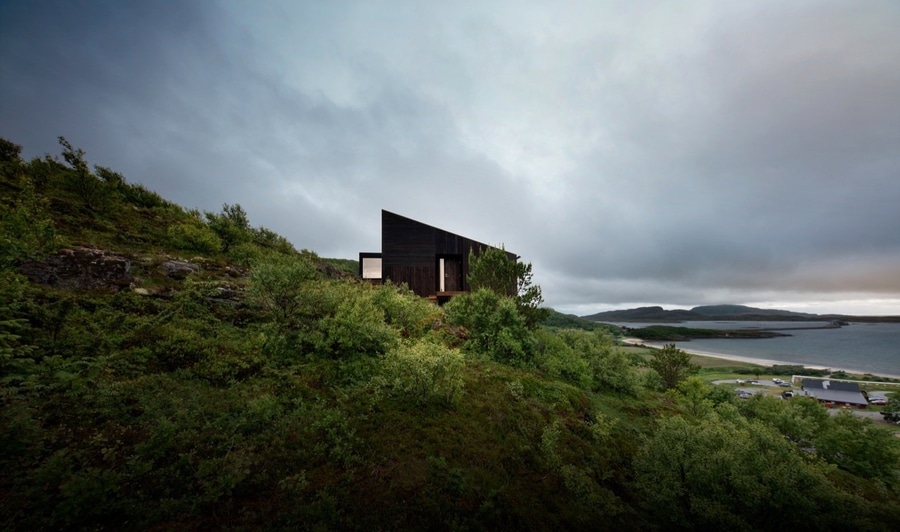
#RESIDENTIAL ARCHITECTURE PROJECTS
A Matte Black Cabin Steps Down the Steep Slopes of Norway’s Stokkøya Island
On the windswept Norwegian island of Stokkøya, a holiday cabin built from local timber connects deeply to the landscape.
When a couple with three young children asked Kappland Arkitekter to design an island retreat on a steeply sloping plot, the Oslo-based architects didn’t just rise to the challenge—they created a home that fully embraces the tricky terrain.
"The building follows the terrain and forms a stepped unit on the hillside, creating several levels, both indoors and outdoors," explain the architects. "The goal was to preserve the way one moves up and down the steep hillside indoors—to preserve the relationship with the site and its characteristics."
The terraced design of the 904-square-foot cabin places the open-plan living area on the property’s raised side to the east and the sleeping areas downslope.
At either end of the linear volume are two additions that extend toward the north and south sides: a raised "loft box" and a lower-elevation "rest box." These flexible rooms can be adapted to serve as extra bedrooms, workrooms, or playrooms. "This way, one can experience climbing and descending the slope—both indoors and outdoors," add the architects.
"The shape of the building defines two outdoor spaces that can be used during different sun and wind conditions," explain the architects. "At the back, an outdoor space is formed by the slope and the building. Here, one can enjoy the morning sun and at the same time be protected from the westerly winds."
In addition to maximizing enjoyment of the landscape, the Stokkøya Cabin emphasizes low-impact design both physically and visually. Appearing to float above the landscape, the deliberately compact cabin rests atop piles at the front and a concrete slab at the rear for minimal site impact.
The facade is clad in dark Norwegian royal impregnated wood to make the building recede into the landscape, and locally sourced timber is also used throughout the interior and for the outdoor deck.
To subtly break up the interior’s all-timber palette, the architects used a mix of Norwegian birch planks and panels that vary in thickness and direction to delineate the active and quiet zones in the home.
"In order to effectively utilize space in the relatively small bedrooms and other areas, most of the furniture is designed specifically for the cabin and built on-site," note the architects. Kappland Arkitekter worked with a local carpenter to design and build the birch veneer furnishings that maximize the flexibility of the compact home.
"The main functions in the cabin are organized along the main unit, with the walkway to the west," say the architects. "As such, contact with the views and the sea are enhanced while moving through the cabin."




